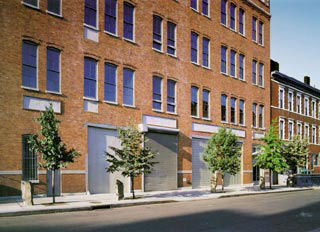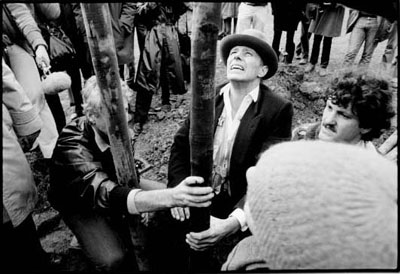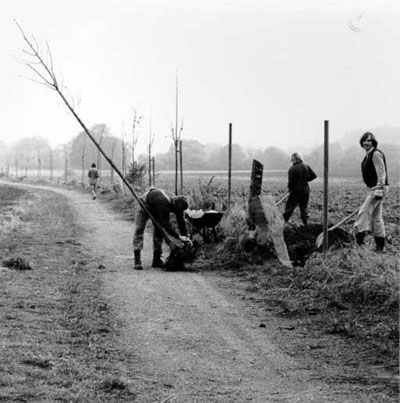Walter De Maria
The Lightning Field, 1977, by the American sculptor Walter De Maria, is a work of Land Art situated in a remote area of the high desert of southwestern New Mexico. It is comprised of 400 polished stainless steel poles installed in a grid array measuring one mile by one kilometer. The poles-two inches in diameter and averaging 20 feet and 7½ inches in height-are spaced 220 feet apart and have solid pointed tips that define a horizontal plane. Only after a lightning strike has advanced to an area of about 61 m above the The Lightning Fielf can it sense the poles. The experience of the work directly in nature, the effect of the changing light, the shifting space, heat and the sense of waiting for a specific event (the lightning) heightens the viewer’s sense of scale and time.

Genetologic Research Nr. 5bis, 2003 (100cm x 100cm x 450cm) 1km long
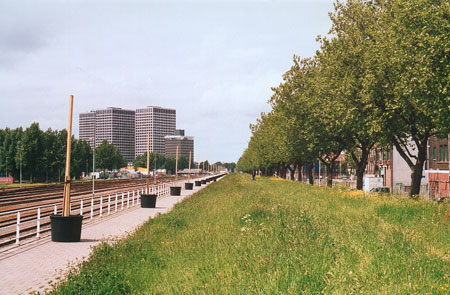
Maarten Vanden Eynde
Bospolder Tussen Dijken, 2003, by the Belgian sculptor Maarten Vanden Eynde, is a work of Land Art in a remote area of Bospolder Tussendijken, near Rotterdam, The Netherlands. It is comprised of 34 wooden beams installed in plastic tubs and covered with earth. Each pole is 450 cm in length and weighs, together with the tub, about 500 kilo. The whole work stretches out over 1 km. The wood is bended, twisted and stretched because of the weather conditions and the changing of seasons.
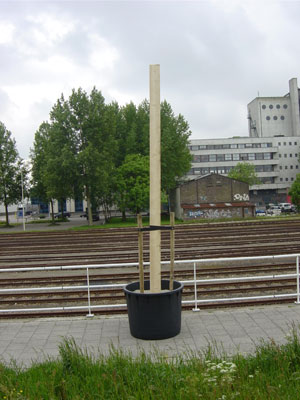
Joseph Beuys
Beuys’ planting of 7000 oak trees troughout the city of Kassel for Documenta7 embodied a wide concept of ecology which grows with time. 7000 trees were planted next to a basalt stone marker. Beuys stated that the project is a ‘movement of the human capacity towards a new concept of art, in symbolic communication with nature.’ The first tree was planted in 1982; the last tree was planted eighteen months after Beuys’ death at the opening of Documenta8 in 1987 by his son Wenzel Beuys.
‘I believe that planting these oaks is necessary not only in biospheric terms, that is to say, in the context of matter and ecology, but in that it will raise ecological consciousness-raise it increasingly, in the course of the years to come, because we shall never stop planting.’
‘I think the tree is an element of regeneration which in itself is a concept of time. The oak is especially so because it is a slowly growing tree with a kind of really solid heartwood. It has always been a form of sculpture, a symbol for this planet.’
-Joseph Beuys, quoted by Johannes Stuttgen, 1982
